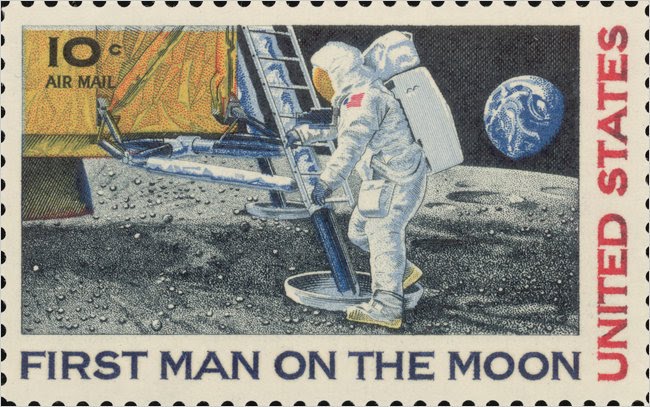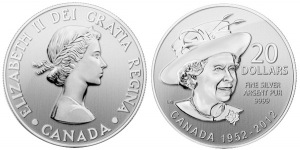Posts by Ian Glen
The Great Olympic Debate – The Royal Mint or Royal Mail? You decide…
So who did better capturing the essence of the Olympic Games? The Royal Mail, with their combination of Olympic Sport Stamps and Gold Medal Winner stamps or Royal Mint with their countdown series of £5 collector coins and general circulation 50 pence sports coins?
Tell us your preference and why with the poll and comments below.
Join the debate – leave a reply below…
Read about the Olympic Legacy
Letter from the Moon – how Neil Armstrong posted a letter from the Moon
It was with great sadness that the world heard that one of its heroes had passed away on 25th August.
Of course, we all know the story of how Neil Armstrong landed on the moon but so many of us know about how he sent the first ever “moon letter” and started a new collecting craze in the USA.
Shrouded in Secrecy
Under great secrecy in case the mission went wrong, the US Postal Service prepared a 10 cent Stamp to celebrate the United States winning the race to the moon.
However, what made this stamp unique was the fact that Armstrong and his co-astronaut ”Buzz” Aldrin took with them on their historic journey not just the die that would make the stamp’s printing plates but also a special ‘Moon letter’ bearing a die proof of the stamp itself. The plan was that the letter would be personally postmarked by Armstrong and Aldrin while they were on the Moon.
The stamp itself had been designed by Paul Calle, a well-known and respected designer from Connecticut. “It quickly became obvious that the first step on the Moon was the most dramatic moment and with that final sketch we knew we had our design!”
Calle’s main problem however, was envisaging what the moon would actually look like. The artist took a chance and showed the module’s tripod foot making a very faint imprint. Fortunately, that turned out to be exactly right.
In Violation of Federal Law
Although some collectors questioned whether the stamp violated federal law by using a living person’s picture, it was argued that though his features were completely hidden by a space suit, it could have been none other than Neil Armstrong.
On 20th July, the lunar module Eagle landed on the Moon. As the world watched on, Commander Armstrong sent the good news from 235,000 miles away: “Houston, Tranquility Base here. The Eagle has landed.”
Back home in Connecticut, Paul Calle recalls how he “sat glued to the television set.” “Fortunately, when Armstrong took that first step, it was perfect,” he said. “Just as I envisioned on the stamp.”
The First Ever “Moon Letter”
Aldrin later joined Armstrong on the Moon’s surface. As it turned out, the two astronauts didn’t have time to postmark the “Moon letter.” So the envelope and its die proof actually were given the “MOON LANDING/USA/JUL/20/1969” hand stamp during the return journey.
Nevertheless, the Moon letter had travelled more than a half-million miles, a lot lot further than any other piece of post had ever travelled. On their return home, the letter underwent a decontamination period at Houston, along with the astronauts themselves. All were quarantined for 18 days.
Decontaminated before production
The die was also processed for decontamination before it was sent to the Bureau of Engraving and Printing, where the process of preparing the plates for stamp production began promptly.
Because of its larger size – it was 50 percent larger than conventional U.S. commemoratives – the stamp was produced in sheets of 128 rather than 200 subjects. A total of 152,364,800 stamps were printed and distributed.
The stamp inspired great interest among first day cover collectors. Within three weeks after the 9th July initial announcement, there had been 500,000 requests for First Day Covers, which would bear not only the 9th September Washington, D.C., date stamp but also a replica of the July 20 “MOON LANDING USA” date stamp that the astronauts applied to their very own Moon letter.
Nearly 9 million First Day Covers
The final tally of first day covers was a phenomenal 8,743,070, a figure that nearly trebled the previous high of three million. In comparison, even the Elvis Presley commemorative stamp of 8th January 1993, one of the most popular stamps in history, received only 4,451,718 official Memphis, Tennessee, first day of issue postmarks.
Given the historical significance of this story, it is fitting that stamps and coins will be among the key tributes issued to commemorate the greatest of American Heroes.
Royal Canadian Mint revels in Diamond Jubilee successes
The Diamond Jubilee of Her Majesty Queen Elizabeth II, who has been Canada’s Head of State since her accession in 1952, has proved to be a hugely popular collecting theme for the Royal Canadian Mint.
Within just a month of its release in early May, the latest coin in their exceptionally popular $20 for $20 silver series had completely sold out of its entire 250,000 worldwide edition limit. The other three coins in the series had also previously sold out in record time; they featured traditional aspects of Canadian culture such as the Maple Leaf and the Polar Bear.
Featuring Mary Gillick’s famous ‘young head’ portrait of the Queen on the obverse, the reverse features a new design depicting a contemporary portrait of Her Majesty. The portrait was exclusively commissioned for the 2012 Diamond Jubilee by Canadian artist Laurie McGaw.
Like the earlier coins of the series, this latest coin was struck in 7.96 grams of 99.999% fine silver and was available at its face value of CAN $20 to the North American market. The coin reached its mintage despite a limit of three coins per household.
This sell-out was closely followed by another success story for the Royal Canadian Mint – this time the ground-breaking 2012 Diamond Jubilee ‘High-Relief’ $50 Gold Proof Coin which also sold out literally weeks after its release.

The first ever ‘high relief’ 99.999% Gold Proof Coin also features the first ever left facing effigy of QEII
Issued with a worldwide mintage of just 50 pieces, this stunning double effigy piece was struck in 99.999% pure gold, weighed 33.17 grams and measured 30mm in diameter.
More significantly, it was the first 99.999% pure gold coin ever to be struck in ultra-high relief proof quality – a complex and time-consuming process involving striking the coin no less than four times and individual hand-polishing. In another numismatic first approved by Buckingham Palace, this technique was applied to a left facing effigy of Elizabeth II, again designed by Laurie McGaw.
“Striking the purest gold in the world at such a high relief presented a mix of challenges and advantages due to the softness, malleability, and flow rate of gold. The result is an image of extraordinary height and fluidity,” said a Royal Canadian Mint spokesperson.
Susanna Blunt designed the obverse which was also approved by the Queen.
View The Westminster Collection’s range of Diamond Jubilee coins.





